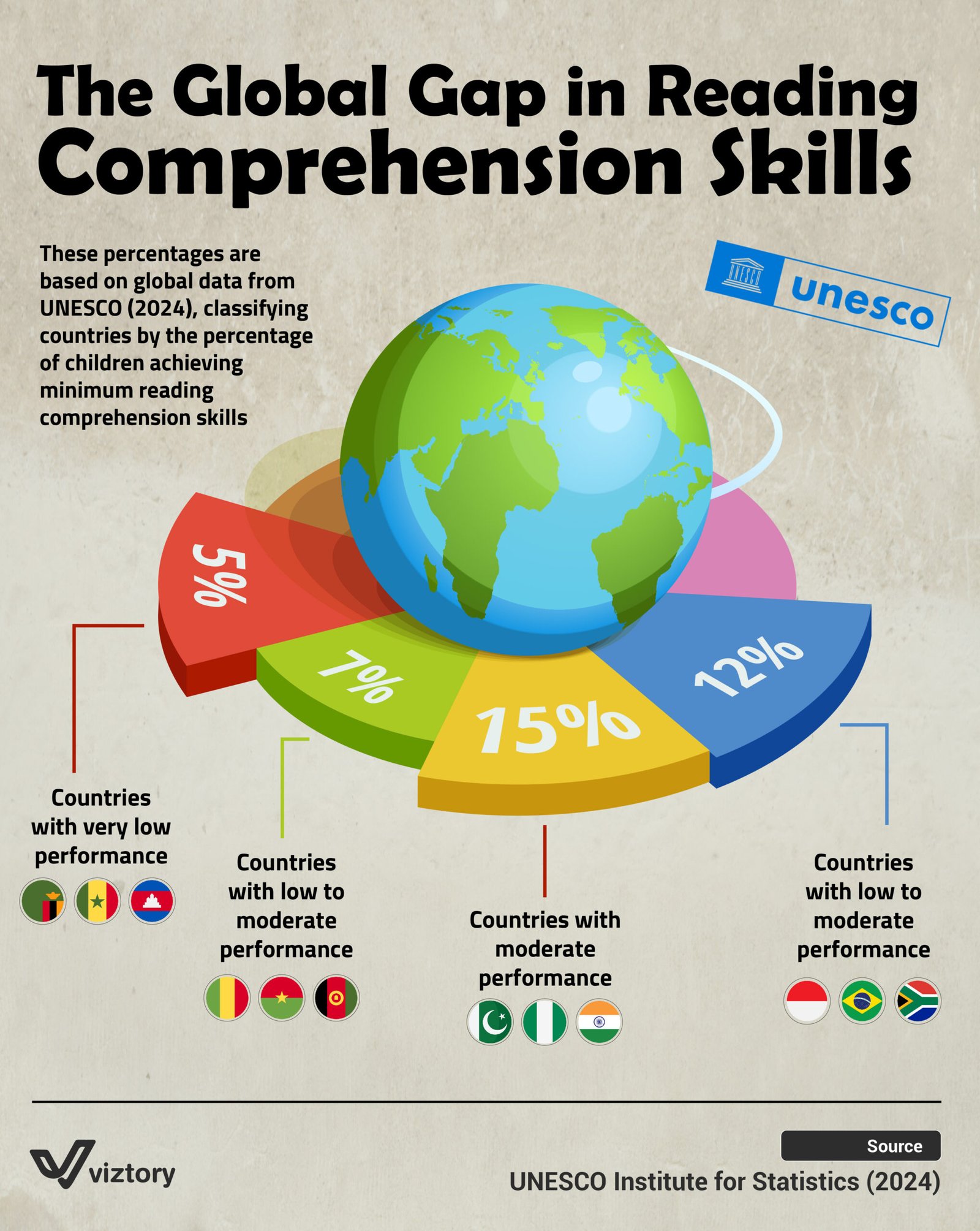The Global Gap in Reading Comprehension Skills
-
Jan, Tue, 2025
The visualization highlights the disparity in reading comprehension skills among children worldwide, as reported by UNESCO in 2024. The data categorizes countries into groups based on the percentage of children who meet the minimum reading comprehension standards. These classifications range from countries with very low performance to those with moderate performance, emphasizing a pressing global issue.
The Role of Education in Bridging the Gap
Reading comprehension is a cornerstone of education. It enables individuals to process, interpret, and utilize information effectively. However, the data reflects a significant global challenge. In countries with very low performance, such as Senegal and Cambodia, children are struggling to develop foundational skills due to inadequate access to quality education, undertrained teachers, and insufficient resources. Conversely, countries in the “moderate performance” bracket, like India and Nigeria, show some progress but still face systemic hurdles.
The Multiplier Effect of Poor Literacy on Technology
Education is not an isolated sector—it profoundly influences other domains, particularly technology. Low reading comprehension rates limit the ability of future generations to engage with technological advancements. For instance, in countries with lower literacy rates, children may struggle to acquire coding, data analysis, and other digital skills, creating a technological divide. This further isolates these nations from participating in the global digital economy, stifling innovation and economic growth.
Moreover, technology-driven solutions in education, such as online learning platforms, often remain inaccessible in these regions due to the lack of basic literacy skills. As a result, technological tools meant to close educational gaps sometimes end up widening them.
Addressing the Global Challenge
To address this gap, targeted interventions are crucial. Investment in teacher training, equitable resource distribution, and policies that promote literacy can help bridge this divide. Leveraging technology itself, through adaptive learning platforms and mobile literacy applications, could also be part of the solution. However, such tools must be paired with robust infrastructure and foundational education initiatives to be effective.
Conclusion
The global gap in reading comprehension skills underscores the critical need for action. Education is not merely about learning—it is about empowerment and equipping individuals to navigate a rapidly evolving world. By addressing literacy gaps, nations can lay the groundwork for a more equitable and technologically inclusive future.

